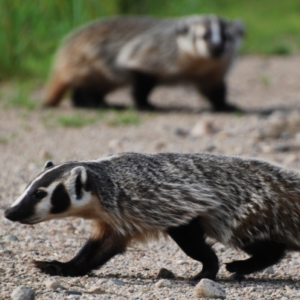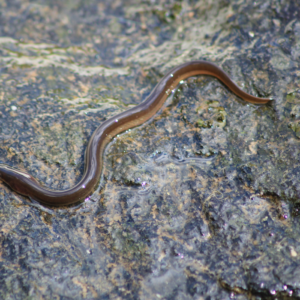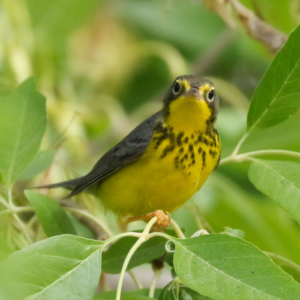Baird’s Sparrow
Baird's Sparrow is known for its song. There are 13 types – 7 of which account for 89% of songs heard! To keep hearing them, we need to protect this sparrow. Save endangered species today by joining one of our campaigns!
Help End the ExtinctionVital Signs
- Common name: Baird’s Sparrow
- Latin name: Ammodramus bairdii
- Conservation Status: Special Concern
- Range: Alberta, Saskatchewan, Manitoba
- Lifespan: unknown, but has lived up to 4.5 years
- Size: weight of 15-21.5 g, length of 12-14 cm, wingspan of 22-23 cm
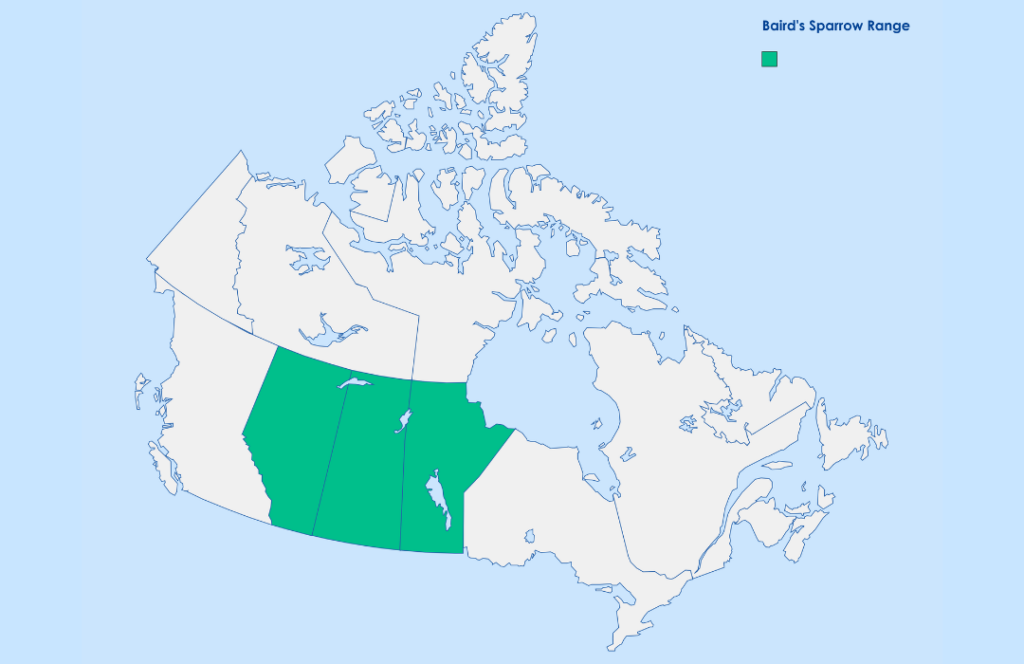
Baird’s Sparrows are usually sandy brown in colour with a white chest and belly. They have black and brown streaks on their back and some on the chest, creating a “necklace.”
The Facts
- It has a distinct yellow-ochre face with moustache-like marks near the beak!
- They rarely return to the same nesting site twice
- Babies leave the nest, still flightless, after 8-11 days
- Their song is a series of notes followed by a trill. Individuals sing only one song type throughout their life
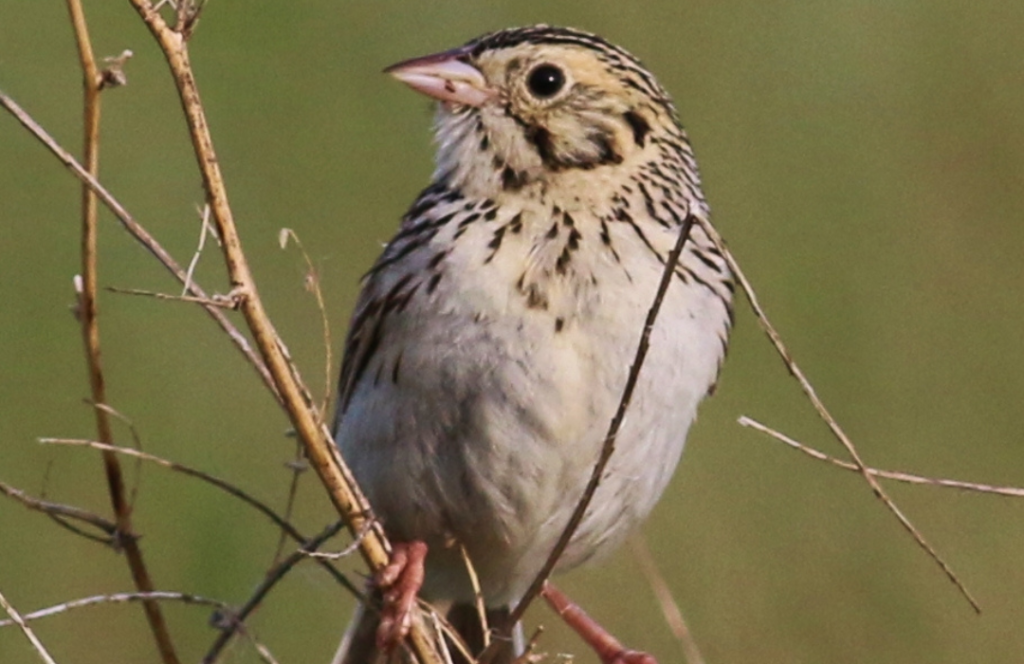
Threats
The main threat to Baird’s Sparrows is habitat destruction. A lot of habitat is lost to conversion of native grassland to cropland. Factors such as urbanization and roadway development are also causing habitat fragmentation.
Habitat fragmentation leaves Baird’s Sparrow habitats vulnerable to nest parasitism and invasive exotic plants. The infrastructure of energy extraction and renewable energy projects contributes to this fragmentation, too. The number of gas wells in the Baird’s Sparrow’s breeding range almost tripled in the last 20 years, and impacts more than 30,000 hectares of grassland habitat. Baird’s Sparrow is also affected by things that disrupt natural processes, like livestock grazing, irrigation, and controlled burns.
What’s Being Done
Baird’s Sparrow is protected federally under the Migratory Birds Convention Act (1994) and provincially under Manitoba’s Endangered Species Act. Some of its habitat is also protected, including half the grasslands in Alberta and at least 30% of native grassland in Saskatchewan.
However, these protections aren’t in place specifically for Baird’s Sparrow, so they don’t fit with the bird’s needs. There is no protection from energy development on these lands, except for those that also happen to be in National Parks.
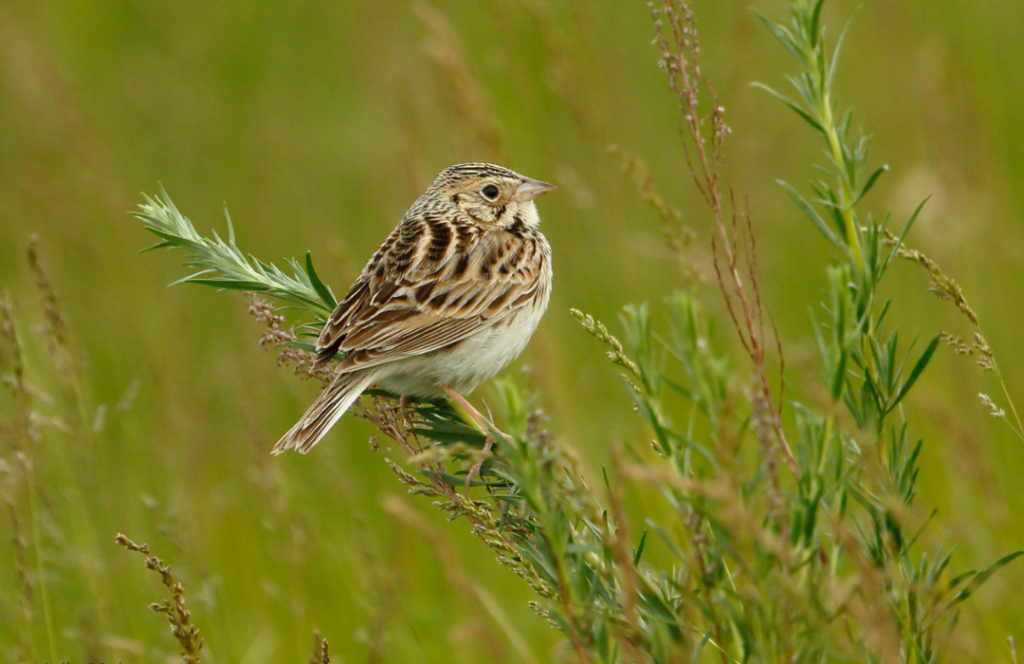
Canada has committed to the goal of protecting 30% of lands, ocean, and freshwater in Canada by 2030. This goal will help protect ecosystems, restore habitats, and fight climate change. All these things are a step in protecting Canada’s at-risk animals—so let’s hold the federal government to their promise.
How to Help
- Stay informed: Support Nature Canada’s various bird conservation and protected areas.
- Make earth-friendly consumer choices: This helps mitigate the impacts of climate change and intensive crop farming. You can learn more about how nature mitigates the effect of climate change here.
- Learn: Stay informed about endangered species by signing up for Nature Canada’s monthly e-newsletter.
- Find out more: Find out more about endangered species by visiting conservation websites like Nature Canada or join one of our campaigns!
RESOURCES
- The Cornell Lab – All About Birds: Baird’s Sparrow
- COSEWIC – Assessment and Status Report
- SARA – Species Profile

